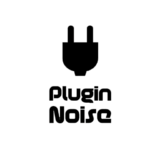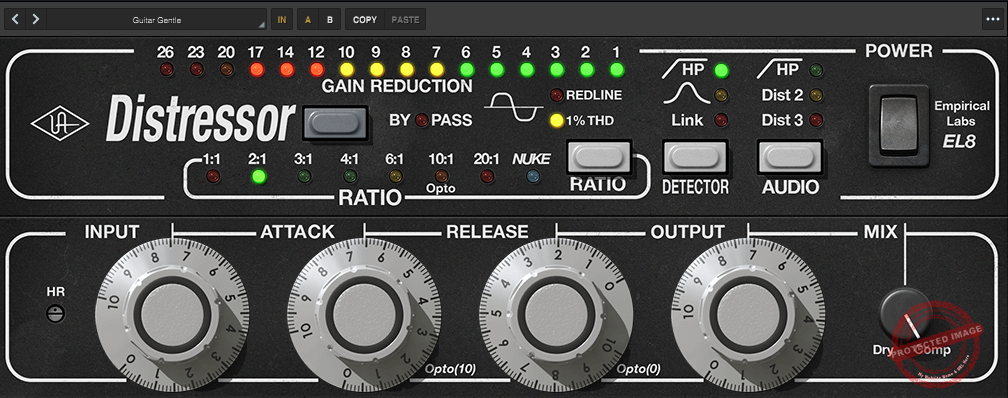Let’s discuss some of the best UAD plugins available with trial versions to your disposal.
As mixing-mastering engineers, we are always looking for that polish, those tones that make the mix sound pristine and “pro.” Very few of us have access to studio racks and equipment that add to that sound. However, the beauty of 2025 is that we don’t need those “hefty” studio budgets to create good music!
Technology has come a long way and brought us some great tools to get that sound that just clicks and feels “finished,” warm, and alive. One of the gifts of this digital audio age that I discovered is the UAD plugins bundle.
For those who aren’t familiar with UAD plugins, they are basically digital recreations of iconic studio hardwares, like vintage compressors, EQs, reverbs, and preamps. Universal Audio has this ability to capture the soul of analog gear. They don’t just sound good; they sound “real.” Using them feels like I’ve got a rack full of legendary studio gear right in my DAW.
When I want to dial in the silky smooth compression of an LA-2A or add some rich, dimensional reverb with the EMT 140, I use these plugins. They’ve helped me shape my sound and finish mixes that I’m genuinely proud of, and my clients are also mostly satisfied with the results.
That’s why I think UAD plugins deserve their own list, and I have decided to share my top 12 picks and the ones that marked a decent dent in my workflow and will hopefully help you with your mixes, too. Just one last thing before we move on to the list: all these plugins are compatible with macOS 10.15 Catalina or newer and Windows 10 and 11 operating systems and are available in AAX, VST, and AU plugin formats.
1. LA-2A Tube Compressor

Let’s start the list with one of my favorites, the LA-2A Tube Compressor. It’s based on the legendary optical tube compressor that has earned its title as the king of compressors over decades of use on iconic records. There are many plugin versions of the LA-2A, but this UAD is honestly my preferred one. I will tell you why.
The LA-2A uses optical compression, which relies on light elements and optical cells to control dynamics. Well, this was a bit technical, but you don’t need to understand it to use it well. So, translating it to Queen’s English, it sounds pretty fluid and natural, is super easy to use, and is pretty hard to mess up with.
- Simple Design
Unlike many compressors, the LA-2A doesn’t overwhelm you with knobs and settings. The attack and release are fixed, which might seem limiting at first, but that’s actually what makes it so user-friendly. The magic lies in its simplicity, as you can just adjust the Peak Reduction to control how much compression you’re applying and use the Gain knob to match your output level. That’s it!
- Smooth Compression
Another adjective that would describe this plugin well is “smoothness.” It works well for vocals, where it can gently tame peaks and make everything sound cohesive without feeling overly processed. I also like using it on bass, especially for that silky low end that feels like a warm hug, keeping the low end tight and controlled. It has a similar effect on acoustic guitars, too, adding warmth and depth while keeping dynamics in check.
- Tube-Driven Richness
One of the things I love most about the UAD version is how faithfully it recreates the tube-driven richness and subtle harmonic magic of the original hardware. Running audio through it adds a warm, analog sheen and gives your sounds that character that’s hard to describe but immediately noticeable.
2. Topline Vocal Suite
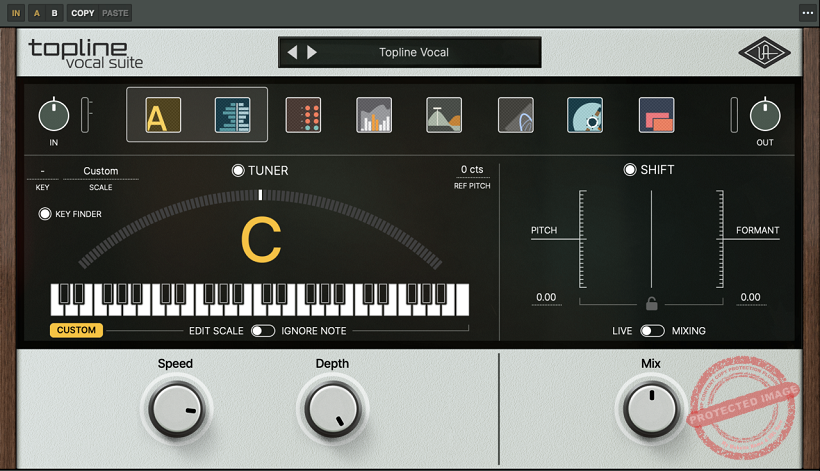
If you are looking for a vocal plugin to cover every step of vocal mixing for radio-ready results, meet with Topline Vocal Suite!
With Topline Vocal Suite, UAD intends to give you the right chain for vocal processing to get them “radio-ready” and offers a streamlined workflow for modern vocal production in a well-organized and “sleek” interface. It combines pitch correction, formant shifting, analog-inspired dynamics, EQ, saturation, and even delay and reverb, all in one place.
- Vocal Tuning and Formant-Pitch Shifting
The first tab in the plugin is for vocal tuning and gives you a key finder, too. Not only does it make quick work of finding your song’s key, but the pitch correction options are decently flexible. You also get the formant and pitch shifting controls, which can work in real-time or offline by using a Live/Mixing switch.
- Dynamics Section
Next, Topline Vocal Suite’s analog dynamics section offers both tube and solid-state options, letting you shape your vocal tone with ease. The saturation and color controls add that subtle harmonic distortion that can make vocals sound like they were recorded through high-end analog gear. Its built-in EQ is also quite intuitive, with visual cues to guide you on where to cut or boost for specific tonal adjustments.
- Modulation and Effects Section
And then there’s the “sweetening” section, which might just be my favorite part. With lush modulation, tape delays, and reverb options like plate and chamber, you can take a dry vocal and transform it. The effects ducking feature is pure genius. It keeps your vocals upfront and intelligible by pulling back the effects while the vocals are active and then letting them bloom in the spaces in between.
Of course, you’d still need additional plugins for de-essing, multiband compression, etc., for tuning your vocals, but this plugin can be used as a quick solution that you can slap on your vocals during recordings, live sessions, or when you simply want to get a demo mix done in as little time as possible.
I won’t call it 100% self-sufficient, but it has a lot of utility for recording and live sessions. Plus, the UAD algorithms in the plugin make it sound great! You can literally use it just for the analog dynamic and tape effects because they sound so good and really complement the tuner.
3. Galaxy Tape Echo
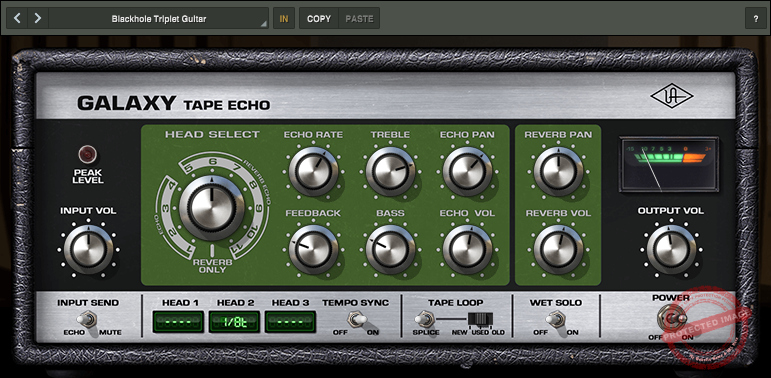
The Galaxy Tape Echo UAD Plugin is modeled after the iconic Roland Space Echo from the 1970s, which is known for its rich, tape-saturated delay or spring reverb.
The Galaxy Tape Echo features multiple playback heads that you can combine to create everything from subtle slapback echoes to lush, layered delay rhythms.
- Tape Age Selector
Want that signature tape wobble or gritty, worn-in vibe? The Tape Age selector (new, used, or old) lets you dial in the exact amount of character you want, for both extremes, like clean and tight or lo-fi and quirky.
- Spring Reverb
However, I like it, especially for its built-in spring reverb, which adds a warm, vintage-style ambiance that pairs beautifully with the delay or stands on its own. You can tweak its volume and panning to fit your mix perfectly, making it a great tool for everything from dreamy vocals to atmospheric keys or guitars.
- Realistic Head-based Workflow
What I am most impressed by is the realistic “head”- based workflow that it offers. The plugin emulates three playback heads: Head 1, Head 2, and Head 3, each representing different delay timings. Head 1 delivers the fastest delay, perfect for slapback effects, while Head 3 provides slower, more spacious echoes. Head 2 sits somewhere in the middle, offering a balanced delay time.
You can use these heads individually or in combination, which opens up creative possibilities for layering rhythmic delays or crafting lush, cascading echoes.
The Head Select knob makes it easy to choose your delay configuration. Some settings use a single head for straightforward delays, while others blend multiple heads for more complex and dynamic effects.
- Tempo Sync Switch
For added precision, the plugin developers have thoughtfully put the Tempo Sync Switch, which allows you to lock the delay timing to your project’s tempo. If you’re looking for something less rigid, you can switch to millisecond mode and fine-tune the delay speed manually using the Echo Rate knob.
- Tape Loop Switch
Another great feature is the Tape Loop Switch, which lets you choose between New, Used, and old tape conditions. These options affect the tone and character of the delay, with older tape introducing more wow, flutter, and saturation for that gritty, vintage vibe.
The plugin is also quite expressive in real-time. You can crank the Input Gain to add saturation and distortion or adjust the Feedback knob to go from simple repeats to a cascading wall of sound that feels alive. And let’s not forget the Wow and Flutter controls, which add subtle imperfections for even more tape-like authenticity.
4. SSL 4000 E
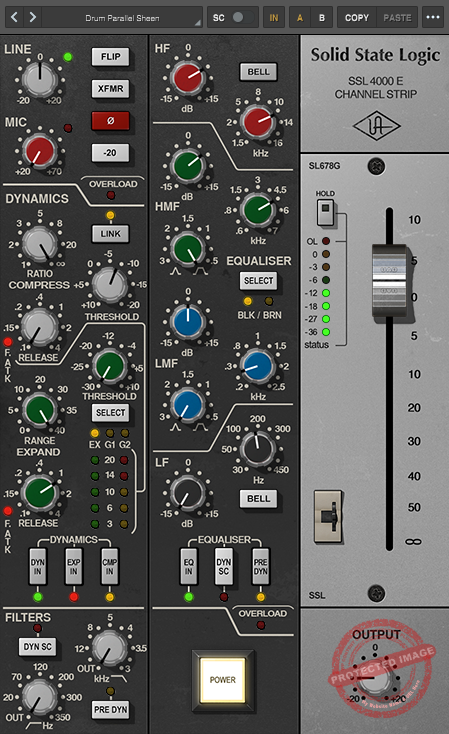
I am sure this is not the first time you’ve heard of the ‘great’ SSL 4000 E Bus Compressor, as it has been a staple for many professional studios for decades, and the UAD version brings all that analog magic straight to your DAW.
Consider SSL 4000 E as the “glue” that holds mixes together. It has the ability to make your mixes tighter, punchier, and more cohesive without losing their natural energy.
- Essential Compression Controls
Let’s talk about its controls first. Like any compressor plugin, you get the essential Attack, Release, Threshold, Ratio, and Makeup Gain controls. A 2:1 ratio works wonders for subtle glue, but if you need more dramatic compression, the higher ratios deliver that signature SSL punch.
Line and Mic inputs allow you to choose between processing a line-level signal or a microphone-level signal, giving you flexibility based on your source. The Flip button swaps the input path, often used for A/B testing or quickly reconfiguring routing.
The XF MIR option is a mirror input setting that aids in external routing workflows, and you also get a Phase Flip button to fix phase issues when layering sounds or working with multi-mic setups.
In terms of filtering sounds, SSL’s EQ section is divided into four main bands:
| Frequency Range | Description |
| HMF (High Mid Frequencies) |
Perfect for carving out space or boosting presence in elements like vocals or guitars. It’s where you dial in the clarity and edge.
|
| LMF (Low Mid Frequencies) |
Helps control the warmth and body of your mix. Ideal for taming muddiness or adding depth to instruments.
|
| HF (High Frequencies) |
Adds brightness and air to your tracks, making them sparkle without sounding harsh.
|
| LF (Low Frequencies) |
Focuses on the low end, letting you tighten up bass elements or add warmth to kick drums and synths.
|
- Filters Section
Now, there’s something that I really find unique about this UAD version of the SSL 4000 E, and it’s the Filters section. It has a PreDyn button that places the filters before the dynamics section, allowing you to shape the tonal balance before compression.
- Dyn SC (Sidechain) Button
The Dyn SC (Sidechain) Button activates the filters on the compressor’s sidechain, letting you control which frequencies trigger the compression. That is especially handy for ducking effects or avoiding pumping caused by low-end energy.
5. Manley Tube Preamp
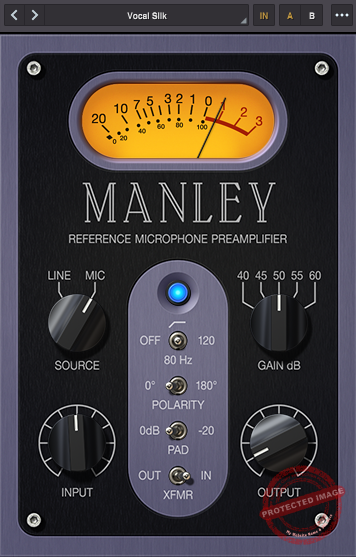
The Manley Tube Preamp is one of those UAD plugins that are known for the tone and texture they offer, and this plugin has a creamy, tube-driven sound that you need on your vocals, bass, and other melodic instruments. With very few controls, this plugin is designed for simplicity.
- Smooth Top-End
One particular attribute of Manley Tube Preamp that I just love is that it creates a smooth top-end. Manley Tube Preamp adds a sheen to vocals and instruments without sounding harsh or brittle, making it ideal for polishing lead elements or highlighting intricate details in your arrangement.
- High-Frequency Lift
This silky high-frequency lift is complemented by a natural, slightly rounded low end, which adds fullness and depth to bass-heavy sources like kick drums, bass guitars, and even low-register vocals.
- Vintage Harmonic Saturation and Distortion
When pushed harder, the preamp introduces a tasteful level of harmonic saturation and distortion, giving your tracks a vintage warmth and texture. This isn’t an overbearing distortion but subtle and dynamic, adding just enough grit to give your sound an edge while preserving its musicality.
For example, on vocals, the saturation adds a touch of intimacy, making performances feel more connected and expressive. On guitars and synths, it provides a crunchy richness that makes them stand out in the mix.
Perhaps the most magical quality of the Manley Tube Preamp is its ability to enhance harmonic detail and transient clarity. Even at lower gain settings, it brings out the nuances in performance, making acoustic instruments feel more present and vibrant.
6. Helios Type 69 EQ and PreAmp 4
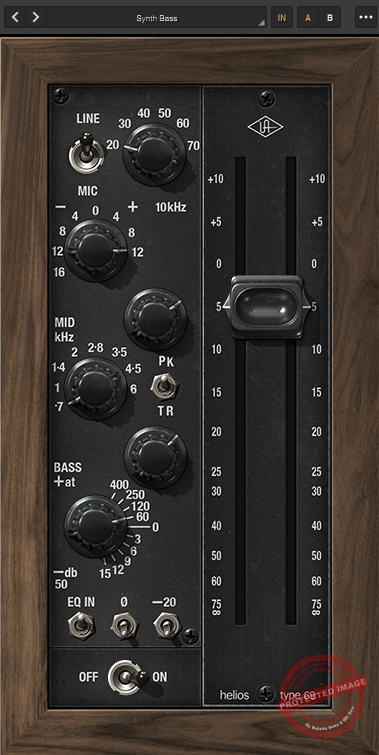
The origins of the Helios EQ trace back to the legendary Olympic Studios in the late 1960s, a hotspot for artists like Led Zeppelin, The Beatles, Jimi Hendrix, and Queen.
This piece of history, designed by Richard Swettenham and later popularized under the Helios brand, was the backbone of many classic recordings.
UAD has recreated Helios as an EQ and preamplification plugin, offering a digital version of its “bold” in the midrange and “rich” on the low-end sound. Here are all the things about the plugin that stood out for me.
- Passive EQ with a Punch
Most passive EQs like the Pultec are known for their clean, transparent sound, but the Helios Type 69 is a little different. It’s aggressive, especially in the midrange, making it perfect for instruments and vocals that need to cut through a mix.
Its high-frequency band is fixed at 10 kHz, delivering a silky “air” effect, while the mid-band offers a wide range from 700 Hz to 6 kHz, gradually narrowing its Q as you boost.
- Versatile Low-End Control
The bass section provides both peaking and shelving options. However, what I don’t prefer is that these are fixed at specific frequencies, with a unique behavior that can feel like a mix of EQ and a high-pass filter when attenuated. Anyway, with this feature, you can sculpt a strong, resonant, low-end without overwhelming the mix.
- Preamp Flexibility
The plugin’s step gain and attenuation settings aren’t just functional; they’re musical. Whether you’re adding subtle warmth or driving the preamp for rich distortion, the results feel authentic and organic. The 20 dB pad is particularly handy for balancing hotter signals or exploring tonal coloration at lower levels.
Finally, the plugin has its “vintage” roots but with a modern or 2025 touch. For example, boosting 60 Hz on a bassline instantly adds weight and warmth, while a 10 kHz lift on a snare brings clarity and air. I used it on instruments like Rhodes, and it worked pretty well, as it solidifies low-mids and lets the top end sing without muddiness.
7. Empirical Labs EL8 Distressor
Distressor plugins usually don’t sit well with me, but there’s something different about UAD’s Distressor.
The Empirical Labs EL8 Distressor has a well-rounded range of compression options, starting with a gentle 1:1 ratio that enhances warmth without applying actual compression all the way to the intense.
- Nuke Mode
I love that it comes with a “Nuke” mode for dramatic, over-the-top dynamics. What that means is that it is “extreme” in nature. When engaged, it heavily compresses the audio, squashing loud peaks and boosting quieter parts, resulting in a dramatic and explosive sound.
You can use this setting for applications where bold, attention-grabbing dynamics are needed, such as crushing drum room mics to create a larger-than-life sound or adding aggressive energy to rock or electronic tracks.
- Dist 2 and Dist 3 Modes
The plugin has Dist 2 and Dist 3 modes, which introduce harmonic saturation that can vary from smooth, tape-like textures to edgier, more aggressive tones. This gives you endless options for shaping your sound, whether you’re enriching vocals, adding depth to synths, or making drums punch through the mix with authority.
- Modern Additions like Dry-Wet knob and Headroom Control
This powerful compressor takes things a step further, expanding on the capabilities of the original hardware. Features like the Dry/Wet mix control simplify parallel compression, letting you blend uncompressed and compressed signals effortlessly. Meanwhile, the customizable Headroom control offers fine-tuned adjustments to fit your specific needs.
Finally, its sidechain functionality allows precise handling of low-end frequencies or targeting specific problem areas in your tracks. That makes it an invaluable tool for avoiding muddiness in mixes or for achieving greater clarity in both vocals and instruments.
8. SSL 4000 G Bus Compressor
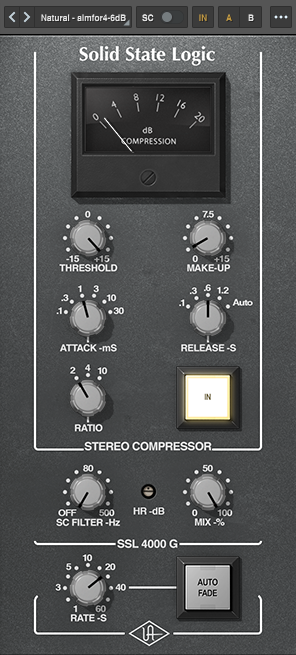
I have heard many producers and engineers swear on SSL 4000 G Bus Compressor, which originates from the heart of the legendary SSL consoles.
For those with sophisticated tastes, the SSL G Bus Compressor isn’t about flashy effects or dramatic transformations. Instead, it focuses on subtly enhancing your mix, adding cohesion and smoothness without overpowering the natural dynamics.
- Simple Compressor Controls
The unit offers a pretty beginner-friendly worfklow, thanks to its simple interface with simple compressor controls such as threshold, makeup, attack, release, ratio, and also a sidechain filter knob.
- Auto Fade Control
What’s novel in this plugin is its Auto Fade control, a quirky but handy feature that automates fade-outs and is useful for effortless track printing.
- VCA Compression
Regarding the sound, it is essentially a VCA Compression, which means that it gives a quick response to transients. That makes it suitable for drums and percussive elements. When used subtly, typically with just 1-3 dB of gain reduction, it creates a sense of cohesion, making the mix feel “finished.”
The bass feels fuller, the drums punch through, and the overall sound becomes tighter and more professional.
9. Pure Plate Reverb
Pure Plate Reverb brings the essence of vintage plate reverb right into your digital audio workstation (DAW).
If you’re familiar with plate reverbs, feel free to skip this paragraph. But if not, traditional plate reverbs are large mechanical devices that use vibrating metal plates to generate a lush and natural-sounding reverb.
These units, often towering at four to six feet tall, were a staple in professional studios for decades, delivering a bright and unique reverb character perfect for vocals, drums, and guitars.
- Easy-to-Use Format
Pure Plate Reverb captures that sound in a compact, easy-to-use digital format. Unlike room or hall reverbs, plate reverbs excel in producing a bright and present tone that cuts through the mix.
This makes them ideal for adding sparkle and depth to lead vocals, electric guitars, and even percussion. Whether you’re going for a subtle sheen or a more pronounced effect, the Pure Plate Reverb can create rich, vibrant sounds.
- Basic Controls
The unit gives you that sound along with sonic controls like low cut and pre-delay sliders and bass, treble, balance, and mix knobs. I’d use it on acoustic guitar to add that delicate “shimmer” that goes really well with the “woody” acoustic guitar texture, making it feel more vibrant and whole.
- Pre-Delay and Panning Options
For electric guitars, the pre-delay and panning options can create a spacious, rhythmic sound that gives the track more depth. You also apply it to vocals, as it can enhance clarity and brightness, helping them feel more alive and present in the mix. On drums, the reverb adds just the right amount of ambiance, lifting toms and snares without overpowering the rest of the track.

